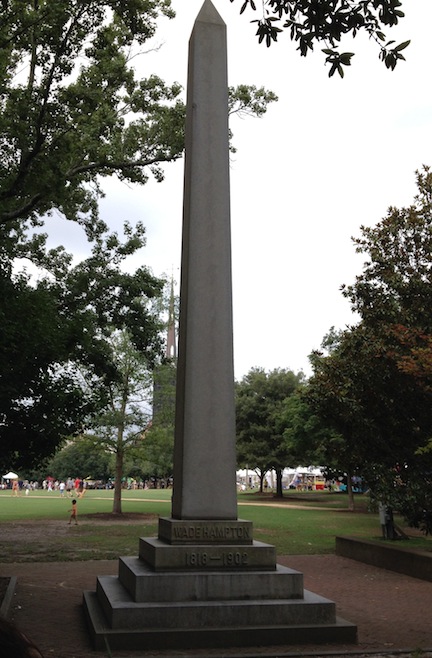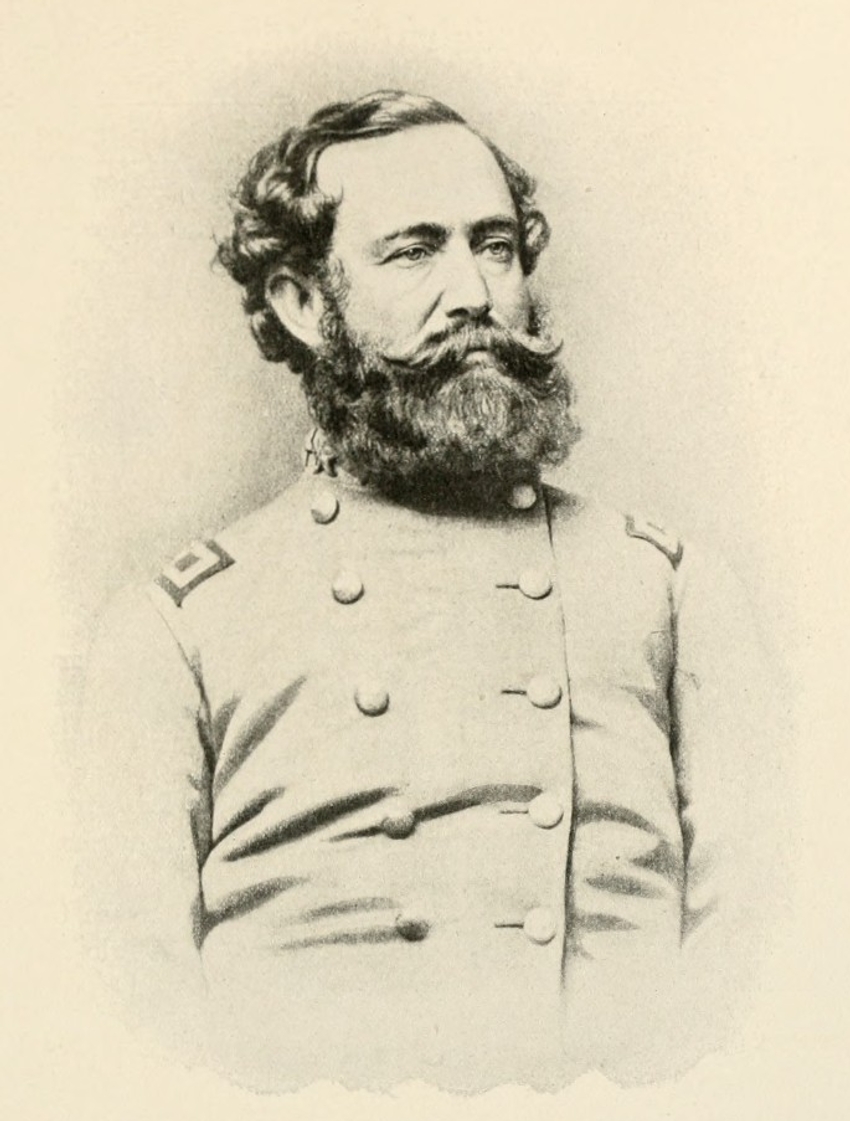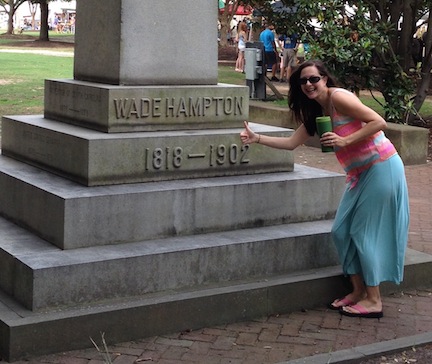Wade Hampton in Charleston
 I’ve just returned from a week in Charleston, South Carolina, where my wife and I spent our honeymoon. It’s tough to vacation in the Cradle of Secession without wanting to totally geek-out on Civil War history—yet I promised Jenny I’d ease back the throttle a little and actually try to relax.
I’ve just returned from a week in Charleston, South Carolina, where my wife and I spent our honeymoon. It’s tough to vacation in the Cradle of Secession without wanting to totally geek-out on Civil War history—yet I promised Jenny I’d ease back the throttle a little and actually try to relax.
I’ll share some of my adventures over the next couple of weeks, but in keeping with my promise to take it easy, I present just a small offering for now: the city’s memorial to Confederate cavalryman Wade Hampton.
Hampton has an equestrian statue on the state capitol grounds in Columbia, and there’s a statue of him in the U.S. capitol, as well. The United Daughters of the Confederacy have a slightly larger-than-life statue of him in their Charleston Museum on Market Street, too.
Charleston was the city of Hampton’s birth. There’s an obelisk in his memory sitting along Meeting Street in Marion Square, a park at the intersection of Meeting and Calhoun Streets. As busy as Meeting Street can be, it’s easy to miss the Hampton monument as you whiz on by in the hectic traffic. This was my third trip to Charleston and I’d driven by the monument multiple times on previous visits, missing it every time. The curtains of tree branches that crowd in on the monument don’t help.

The “stone of memorial,” as is inscribed along its base, was erected by Charleston’s United Daughters of the Confederacy in 1911.
One side of the monument honors Hampton’s military service: colonel of the Hampton Legion of South Carolina Volunteers in 1861; brigadier general in the Confederate army in 1862; major general in 1863; lieutenant general commanding the Army of Northern Virginia’s cavalry in 1865. Another side honors his postwar political career: governor of South Carolina from 1876-’78 and U.S. Senator from 1879-’91 (Hampton died that year).
Twenty years after he died, the UDC raised the monument in Hampton’s honor. If hearts were still so warm toward him and memories still so fresh, surely they must have remembered, too, not only Hampton’s exemplary service during the war but also the notorious anti-Reconstruction violence that marked his tenure as governor and the rampant abuses perpetrated by the so-called “red shirts” who suppressed voter rights. Such contradictions and convenient lapses in memory happened all over the Old South, and today, 150 years later, most such troublesome considerations have been all but forgotten about, anyway.
Marion Park bubbles with large crowds on Saturday mornings when the city’s farmers market sets up. Alongside the farmers selling produce are artisan’s selling handmade jewelry and art prints, food producers with barrels full of homemade pickles and brass drums full of kettle corn, and all sorts of other vendors. Not too far from cavalryman’s monument, ironically, someone offered pony rides for kids.
I wonder how many of those people remember who Wade Hampton is or why the UDC chose to honor him—and what they chose to ignore when they did.

There was only one Wade Hampton; you can always get another wife !!!! ( Humor ).
I love charleston, it is a city of history not just the ACW.I have many friends there who I met thru my civil studies and let metell they know who Hampton was and all about the Hampton Legion.If youshould by chance say something negative about him I guarrenty someone will hit you.I know know in certain part of charleston if your last name is Sherman you can’t buy property there as therre are deed resrictions against anyone wit the name of Sherman.The ACW aside the colonial history of Charleston is huge.A great city to get a great education.
Hey! I used this page to gather some information of the monument for a class project. There are a few facts that I think you may have a little off. You wrote that he stopped serving as senator in 1891 and said that this was the year he died but as listed on the monument he didn’t die till 1902 and the monument was erected in 1911, 9 years after his death, not 20 years as you mentioned.
Other than that minor thing I enjoyed having this page to read information on the monument.